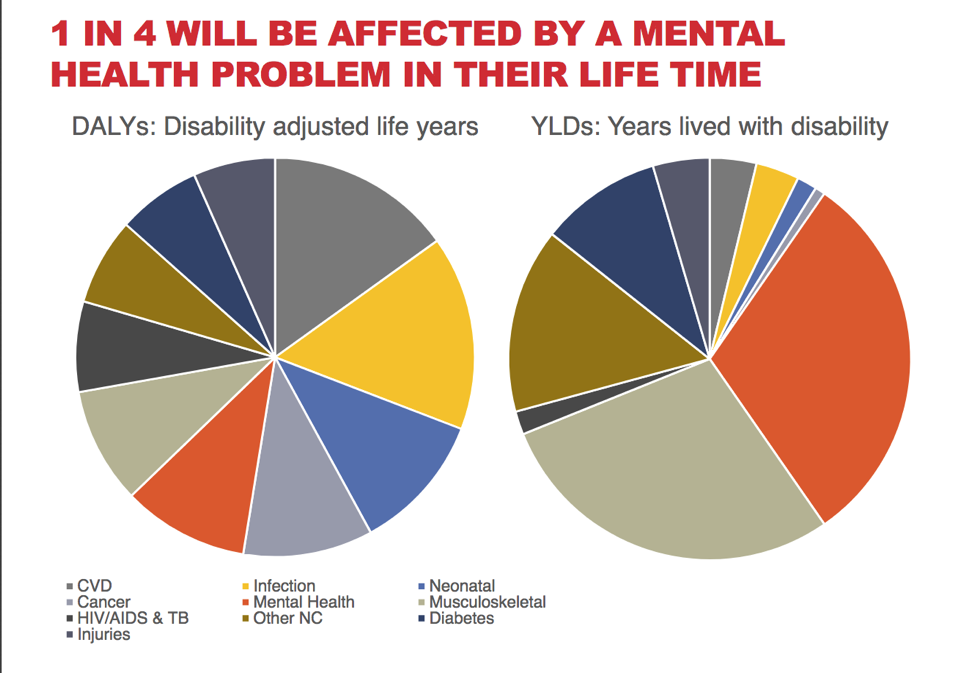
INDEV 101 had the opportunity to hear from Michaela Hynie, a professor at York University. We had the pleasure of hearing her lecture on Culture and Development, and how it relates to her studies on mental health. Michaela Hynie is an accomplished professor at York University’s Faculty of Health, having received her Ph.D. at Mcgill University. She applies her studies of Psychology not only in her teaching, but in an upward of 30 publications and influential research.
Through her lecture we learned that the concept of mental health is often overlooked in development. Issues such as poverty, clean water, and women’s rights are often at the forefront of development initiatives. However, mental health has a direct impact on these issues and development. Dr. Hynie’s work in Rwanda clearly showed how important community development is in improving mental health for individuals and the overall well-being of the community. Mental health problems both reflect and affect everyone in the community. What a culture values, shapes the lens in which these problems are viewed through and understood. This places a large importance of fostering a culture that values mental health intervention.
The class also watched the film Children Full of Life, which made clear that even in a grade-4 classroom, both mental health problems and elements of culture were evident. Through the use of various writing tasks such as daily letters and engaging in open discussion, the teacher was able to foster a collectivist culture with his students. The main focus of his classroom was to understand how to live a happy life. They fostered a sense of community in which every student had a sense of identity. Over time each student began to feel comfortable and began to share their personal experiences with mental health (i.e. the loss of a family member, being bullied, etc.). Collectively they valued honesty, empathy and the sharing of these experiences without the fear of being bullied or ridiculed. This supportive environment provided the social support needed to address the mental health problems in the class. These cultural practices were a direct reflection of the importance of embedding mental health intervention strategies and practices in every social environment.
Figure 1 In the film Children Full of Life, grade 4 teacher Mr. Kanamori fostered a sense of community within his classroom that embraced empathy and the sharing of personal experiences.

Source: Uncle Bugs
Through this topic, we were able to learn about the depth of international development. Opposed to the previous belief that most aid was done tangibly, we learned that mental health is actually a critical factor in the growth of a society. International development is not just about the idea of making sure people are well-fed, but it promotes the idea of a ‘well-functioning society’. When mental health in a society is stigmatized or estranged, it doesn’t just affect the victim but also the community as a whole. Stigma perpetuates separation, lack of affection, as well as damages interactive systems. It is important that mental health becomes accepted culturally and given proper health resources so people may continue living and become active members of society. When communities face difficult situations such as genocide, poverty, war etc., it is inevitable to have individuals who are mentally affected, and it is vital for them to have access to care. In Rwanda, most aid programs were closing too quickly — leaving many vulnerable groups feeling as though they were unsupported. In Bangladesh, mental health is still not recognized as a disease. Culturally mental health is also looked down upon in many other countries. It is saddening because the cultural outlook has an overpowering negative perception, and aid providing communities don’t consider it as much as they should when providing support. When I think of all of the aid allocation that isn’t directed to mental health — I think about other issues that are not addressed as well. Despite the fact that aid is constantly provided and there are numerous organizations that are produced for the sole reason of helping developing countries, it makes me question the system as a whole and if the aid system is really helpful. If we look at the development of countries like China and Thailand — I wonder why other developing countries were and are not able to grow at the same rate. I hope that in the future a more systematic approach is taken so that we can tackle the core issues at hand in order to have real growth in a society.
Mental health is a marker for what is happening in a community, and societal development is a way of improving mental health for individuals and the well-being of the community overall. Mental health is not always prioritized despite the fact that it affects 1 in 4 people (WHO, World Health Organization, 2001.), or that it is a core element to development in a society. The real idea of development is not to have short term responses, or simply provide food security. It also includes social support that can give people strength, whether they may be affected by mental health or not — to become active members of society once again.
References
WHO, World Health Organization, 2001. ‘Mental Disorders Affect on in Four People’.
Michaela Hynie (n.d.). Faculty of Health. [online] Available at: Michaela Hynie
Nayak, P. (2018, January 29). Culture and Development [PowerPoint Slides]. Lecture notes from INDEV101, Faculty of Environment, University of Waterloo, Waterloo, Canada